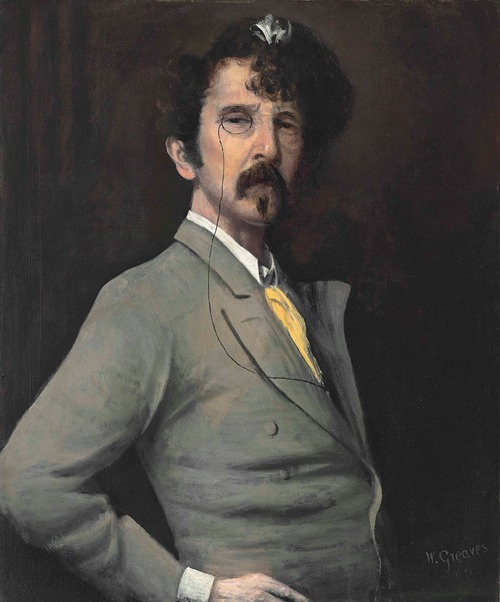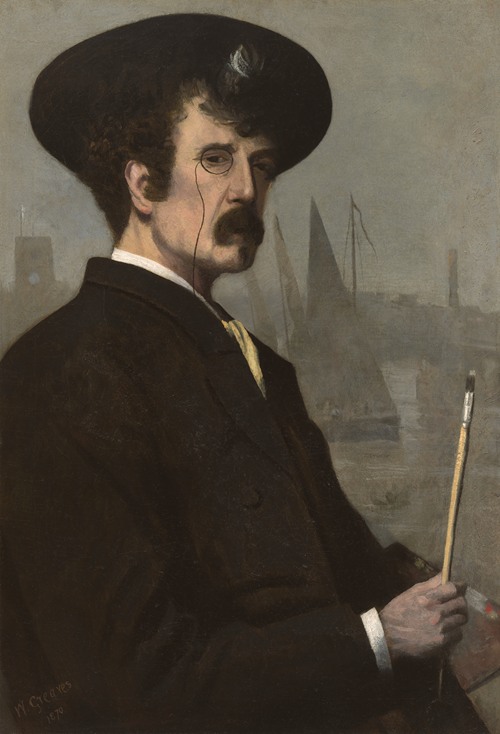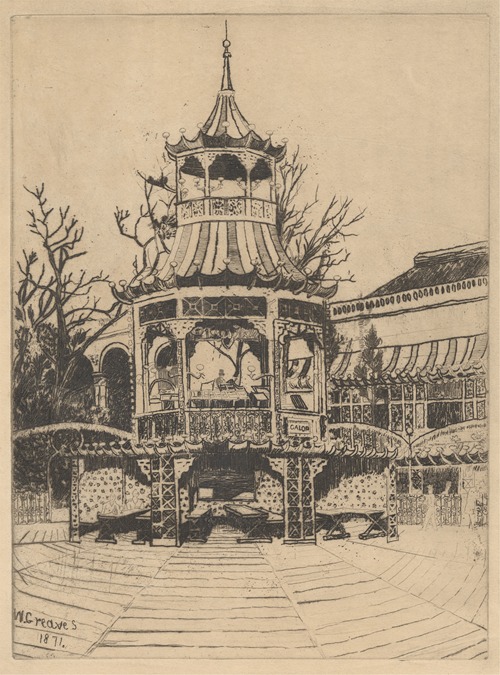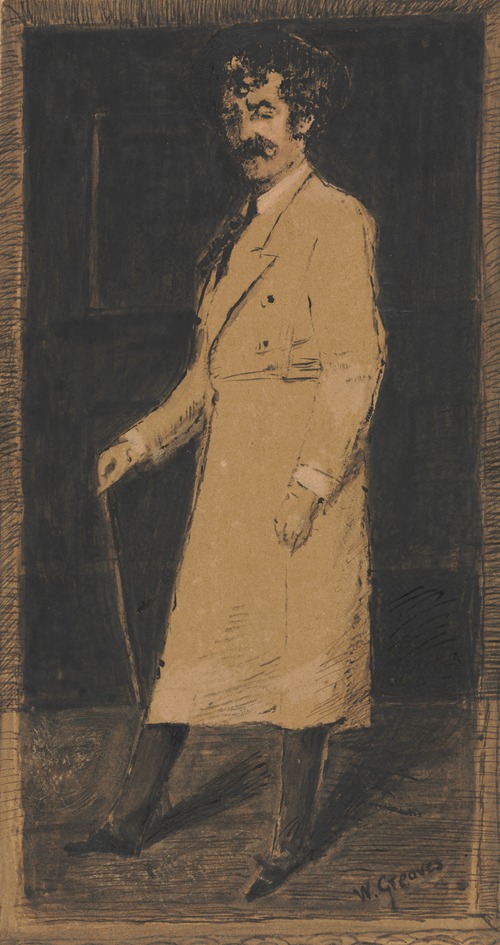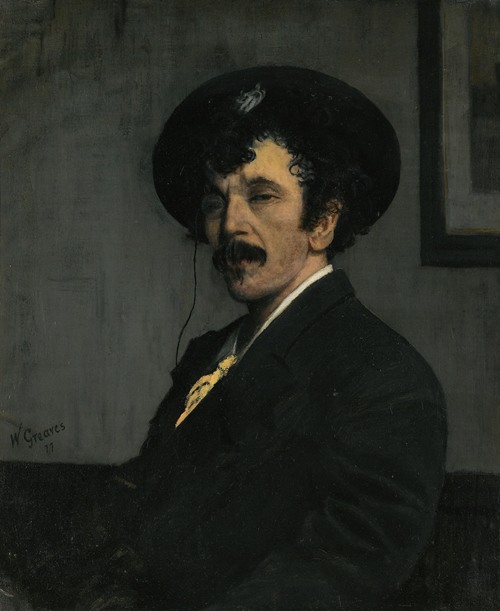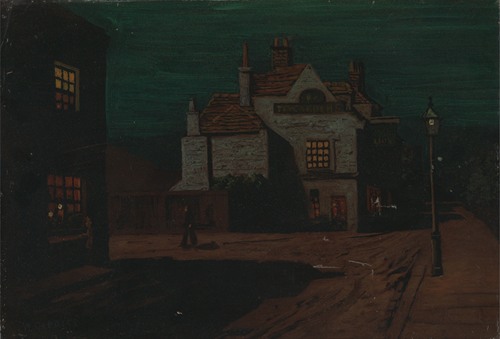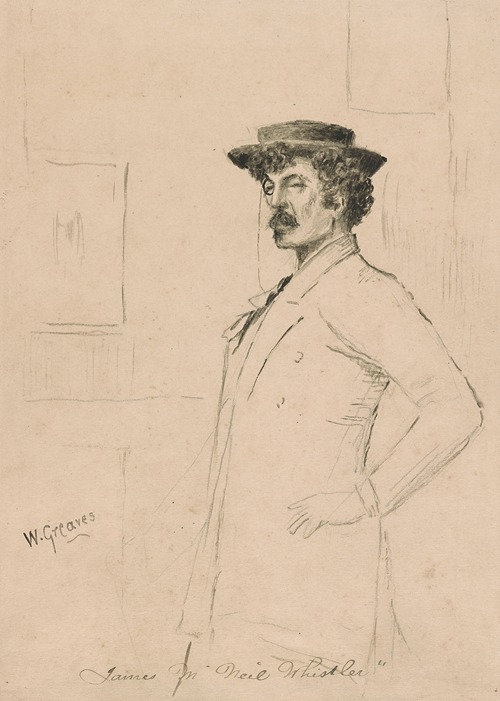
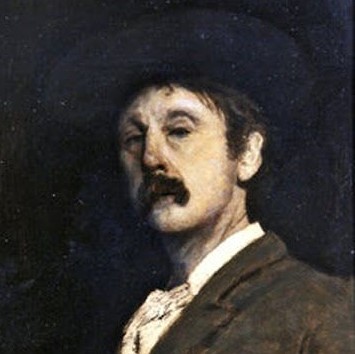
Walter Greaves was a British painter, etcher and topographical draftsman.
The son of Charles William Greaves, a Chelsea boat builder and waterman, and his wife, Elizabeth Greenway, Greaves was born in 1846 at 31 Cheyne Walk, Chelsea, London. His father had been J. M. W. Turner's boatman. Greaves and one of his brothers, Henry Greaves (1844–1904), met James McNeill Whistler in 1863, introducing him to the sights of the River Thames, and becoming his studio assistants, pupils and close friends for over 20 years. The American painter later used these Thames expeditions for inspiration when painting his ‘nocturne’ views of the river at night. "He taught us to paint", Walter Greaves said, "and we taught him the waterman's jerk". Walter Greaves had initially trained as a shipwright and boatman.
The most famous of Greaves' paintings is Hammersmith Bridge on Boat-Race Day, a naïve masterpiece which he claimed to have painted when he was aged sixteen in 1862; however, since he was unreliable over dates, its history has never been settled. The Greaves brothers accompanied Whistler to life class and Walter Greaves attempted to paint portraits, some of his most successful being of their neighbour Thomas Carlyle, whom Whistler also painted. Greaves also drew and painted Whistler, sometimes in caricature, in Chelsea settings and in characteristic moods. In 1876 the Greaves brothers helped Whistler decorate The Peacock Room (now in the Freer Gallery of Art, Washington, D.C.), for the shipowner Frederick Leyland.
